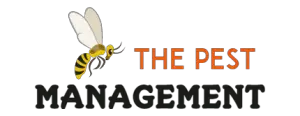Does Sevin Dust Kill Yellow Jackets? {Is It Harmful?}
Have you ever considered using Sevin Dust for pests? Does Sevin Dust kill yellow jackets? If you’ve pondered this, let’s explore its effectiveness together!
Does Sevin Dust Kill Yellow Jackets?
Yes. Sevin powder is effective against yellow jackets, but it doesn’t eliminate them instantly. It typically takes about three to seven days to act on them.
These wasps are prevalent household pests in the US, often building nests around homes. They are particularly active and aggressive during August and September, using their sting as a defense mechanism.
- Sevin powder takes 3-7 days to kill yellow jackets.
- Yellow jackets are common pests in US homes.
- Most aggressive during late summer months.

Can You Use Sevin Dust on Yellow Jackets?
Yes, Sevin dust can be applied to yellow jackets. The dust adheres to the wasp, killing them within days.
Moreover, they transfer the dust to other yellow jackets, leading to a domino effect. The active ingredient, carbaryl, disrupts the insect’s internal system, leading to its demise.
- Sevin dust effectively targets wasps.
- Dust transfer leads to wider colony impact.
- Carbaryl is the lethal ingredient in Sevin dust.
How Do You Use Sevin Dust to Kill Yellow Jackets?
There are three primary methods:
- Applying the Concentrate: Mix Sevin concentrate with water as directed by a pest control expert. Spray the mixture directly into the nests or hiding spots, ensuring an exit for the wasps.
- Applying the Powder: Directly pour the powder into the nest or at the entrance and retreat quickly.
- Spraying: Sevin dust can be sprayed on trees, gardens, and other outdoor areas where yellow jackets are active. Ensure you cover escape routes to prevent them from creating new exit points.
- Three methods: concentrate, powder, and spray.
- Always ensure an exit for wasps.
- Regularly cover escape routes.
Safety Precautions
Safety is paramount when dealing with these aggressive wasps. Always wear protective clothing, including a hat, gloves, eyegear, and thick overalls.
This not only shields you from potential stings but also prevents direct contact with chemicals. Remember, These wasps can sting multiple times, and their stings can be painful and, in some cases, life-threatening.
- Wear protective gear when dealing with these pests.
- Avoid direct contact with chemicals.
- They have multiple-sting capability.
Baiting Techniques for Yellow Jackets
Using baits can be an effective way for yellow jackets control. Combining baits with insecticides like Onslaught can be particularly effective.
Baits like raw chicken pieces, raw fish, canned tuna, cat food, or fruit juice can attract wasps. Once they consume the bait mixed with the insecticide, they carry it back to their nest, leading to the extermination of the colony.
- Effective control with baits.
- Onslaught combined with baits for better results.
- These insects will carry bait back to the nest.
The Importance of Repeat Treatments
To ensure complete eradication, it’s crucial to treat the affected areas multiple times. This ensures that newly hatched wasps, which might have been missed during the initial treatment, are also eliminated. Regular treatments can also prevent future infestations.
- Multiple treatments ensure complete eradication.
- Targets newly hatched yellow jackets.
- Prevents future infestations.
Is Sevin Dust Harmful to Humans?
While Sevin Dust is not inherently harmful to humans or pets, it’s essential to exercise caution. Inhalation can lead to conditions like dizziness, weakness, slurred speech, nausea, and vomiting. Always use it in well-ventilated areas and avoid direct contact.
- Caution advised when using Sevin Dust.
- Potential side effects from inhalation.
- Use in well-ventilated areas.
Alternative Methods of Control
If Sevin dust is unavailable, consider using aerosols containing pyrethrum, such as CV-80D, PT 565, and Stryker 54 Contact Aerosol. These kill yellow jackets faster.
After extermination, treat the nests with insecticide dust like D Fense Dust, Evergreen Dust, or Tempo dust to prevent re-infestation. Natural remedies like peppermint oil and neem oil can also be effective.
- Aerosols as an alternative to Sevin dust.
- Post-extermination treatments for nests.
- Natural remedies like peppermint and neem oil.

Why Yellow Jackets Are Attracted to Certain Areas?
Yellow jackets are attracted to areas with abundant food sources, especially sugary substances and proteins. This is why they’re often seen hovering around trash cans, picnics, and outdoor events. They also seek out locations with suitable nesting sites, such as wall cavities, attics, and underground burrows.
- Attracted to sugary and protein-rich foods.
- Common around trash cans and picnics.
- Prefer specific nesting sites.
Signs of a Infestation
Recognizing the signs of an infestation early on can help in timely intervention. Common signs include increased wasp activity, finding nests, and hearing buzzing sounds within walls, indicating a nest might be inside.
- Increased wasp activity.
- Visible nests or burrows.
- Buzzing sounds within walls.
Preventing Future Yellow Jacket Infestations
Prevention is always better than cure. To prevent future infestations, regularly inspect your property for nests, seal off potential entry points, and keep trash cans sealed. Using repellents and maintaining a clean outdoor environment can also deter yellow jackets.
- Regular property inspections.
- Seal off entry points.
- Maintain cleanliness outdoors.
Conclusion
Yellow jackets, while bothersome, play a role in our ecosystem. With the right knowledge and tools, like Sevin dust and its alternatives, you can enjoy outdoor activities without the nuisance of these stinging pests.
Thanks for visiting ThePestManagement.com for the best information to help you to make the pest control process easy, safe & affordable.

